

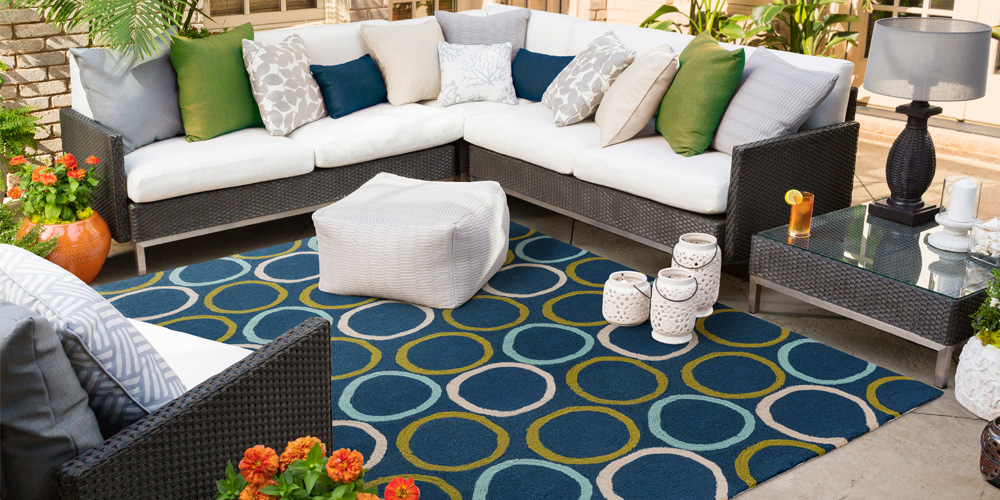
Placing a rug in your outdoor space is an often overlooked detail when turning your space into an outdoor haven. Its inclusion will instantly transform your patio into a cozy area that is a true extension of your indoor home. Because of its location, an outdoor rug is specially constructed with exceptional durability in mind in order to safeguard against any wear from sun and moisture exposure. Read on to help determine the ideal rug best suited to your lifestyle and outdoor living space.
When determining the appropriate size rug for your outdoor space, the same principles in selecting an indoor rug apply. Pay special consideration to structural architecture and furniture arrangement when determining rug placement. An entryway rug, for example, proves to be a functional addition to a doorstep. It prevents any dirt from tracking into your home. Long runner rugs act can cover areas including narrow walkways, porches, and even balconies. Large area rugs are best suited to cover expansive areas such as in outdoor lounge and dining spaces. When covering an expansive area, it is recommended to select a rug that measures between 12-24 inches shorter than the perimeter of the space. The following is the recommended size rug for various size areas:
4 x 6 to 5 x 7
3 x 5
6 x 9 to 7 x 10
5 x 8
9 x 11 to 10 x 12
8 x 10
10 x 13 to 11 x 14
9 x 12
11 x 16 to 12 x 17
12 x 14
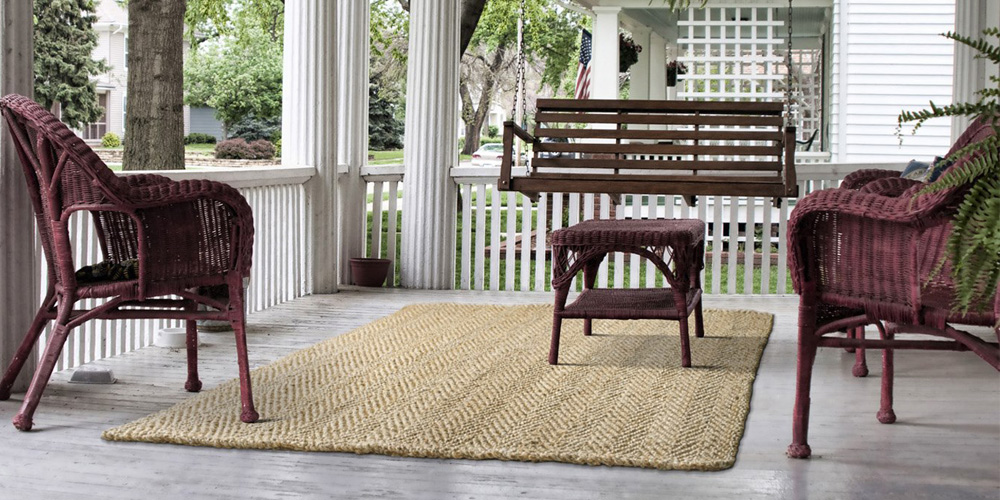
Material is the main constituent determines a rug’s suitability for outdoor use. Outdoor rugs are constructed from a variety of materials that fall into two categories: natural fibers or synthetic fibers.
Natural fiber rugs are prized for their supreme quality and durability. Natural fibers display an unrivaled aesthetic value with a characteristic soft underfoot feel. However, natural fiber rugs are more prone to deterioration when exposed to wet conditions, and are not mildew or fade resistant. Natural fiber rugs are biodegradable which will appeal to eco-conscious consumers. There are two major types of natural rug materials:
Bamboo is incredibly strong making it ideal for outdoor spaces.
Bamboo rugs are naturally hypoallergenic, and naturally mold and water resistant.
Bamboo rugs have an average lifespan between 3-10 years, even in high traffic areas.
Sisal has naturally durable fibers that make it especially resilient to wear.
Sisal area rugs do not trap dirt and does not attract static.
The sustainably harvested plant displays a natural light beige color that make it incredibly versatile in spaces.
Sisal rugs are prone to stains.
Natural Fiber Rug Benefits: Unrivaled aesthetic qualities including soft underfoot texture, eco-friendly
The chemical makeup of synthetic, manufactured fibers are non-porous, which make them especially stain resistant and easy to clean. While synthetic fiber rugs come at a lower price point, manufactured synthetic rugs often display the same look of high-quality natural fibers that come from plants or animals, such as wool. The most common synthetic fiber rugs include:
Synthetic Rug Benefits: Durable in wet conditions, easy to clean, lightweight, inexpensive
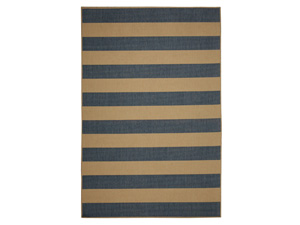
Rectangular rugs are the most comon shape of rug used, and can be used in a variety of settings.
Rectangular rugs are available in a variety sizes including long runner rugs.
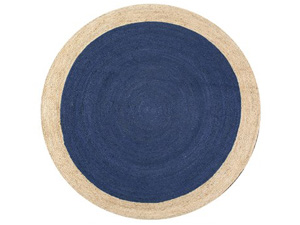
Round area rugs are ideal to display small sized furniture sets.
A round area rug complements outdoor furniture sets that feature rounded edges for a cohesive outdoor aesthetic.
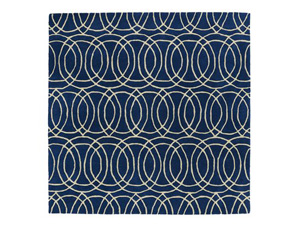
A square rug exhibits the same versatility of a rectangular rug, with the compact fit of a round rug.
This shape is ideal in defining outdoor spaces which feature compact-sized outdoor furniture because of its close-packed size.
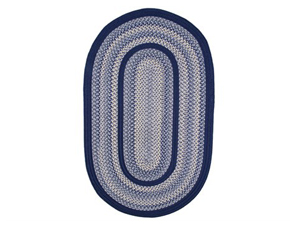
Typically used along entryways and entrances, oval rugs are versatile in a variety of settings. They feature the elongated area of a rectangular shape rug, with the aesthetic qualities offered from a round area rug.
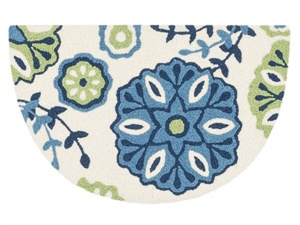
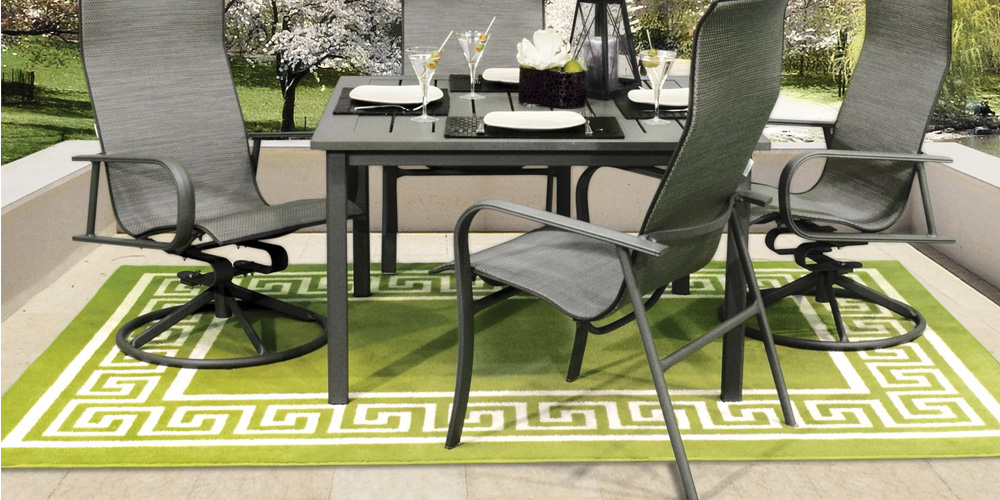
With vertical and horizontal patterns, striped area rugs are an outdoor staple in decorating. A variation on this classic styling include chevron stripes which feature a zigzag pattern.
Geometric patterns bring unqiue graphic appeal to outdoor living spaces with bold shapes and colors. PAtterns range from stately Moroccan motifs to exotic animal prints.
Featuring a single color, solid colored rugs effortlessly enhance outdoor spaces with a prime color. A solid colored rug is easy to pair with different patterns and styles.
Bordered rugs feature more decorative elements to solid colored area rugs. The decorative border can feature different colors and patterns for an understated, yet impactful outdoor look that perfectly frames and showcases outdoor furniture sets.
It is always advisable to follow the care instructions included from the manufaturer of the rug.
Don't forget to clean both sides of your outdoor rug.
To maintain the vibrancy of your outdoor area rug, regularly spot clean and vacuum synthetic rugs.
Mild cleaning detergents can be safely used for many synthetic fibers.
Cotton rugs can typically be machine-washed using warm water and mild detergent.
When spills occur, always dab excess moisture whether the rug is consturcted from natural or synthetic fibers.
To remove stains on jute rugs, vigorously dab with club soda.
When storing a rug, always roll it.
Storing a rug is recommended for homes in colder climates. Snow and ice is when rugs are most susceptible to moisture.



